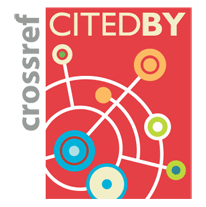Mechanisms for the emergence of Gaussian correlations
Marek Gluza, Thomas Schweigler, Mohammadamin Tajik, João Sabino, Federica Cataldini, Frederik S. Møller, Si-Cong Ji, Bernhard Rauer, Jörg Schmiedmayer, Jens Eisert, Spyros Sotiriadis
SciPost Phys. 12, 113 (2022) · published 30 March 2022
- doi: 10.21468/SciPostPhys.12.3.113
- Submissions/Reports
-
Abstract
We comprehensively investigate two distinct mechanisms leading to memory loss of non-Gaussian correlations after switching off the interactions in an isolated quantum system undergoing out-of-equilibrium dynamics. The first mechanism is based on spatial scrambling and results in the emergence of locally Gaussian steady states in large systems evolving over long times. The second mechanism, characterized as `canonical transmutation', is based on the mixing of a pair of canonically conjugate fields, one of which initially exhibits non-Gaussian fluctuations while the other is Gaussian and dominates the dynamics, resulting in the emergence of relative Gaussianity even at finite system sizes and times. We evaluate signatures of the occurrence of the two candidate mechanisms in a recent experiment that has observed Gaussification in an atom-chip controlled ultracold gas and elucidate evidence that it is canonical transmutation rather than spatial scrambling that is responsible for Gaussification in the experiment. Both mechanisms are shown to share the common feature that the Gaussian correlations revealed dynamically by the quench are already present though practically inaccessible at the initial time. On the way, we present novel observations based on the experimental data, demonstrating clustering of equilibrium correlations, analyzing the dynamics of full counting statistics, and utilizing tomographic reconstructions of quantum field states. Our work aims at providing an accessible presentation of the potential of atom-chip experiments to explore fundamental aspects of quantum field theories in quantum simulations.
Cited by 3

Authors / Affiliations: mappings to Contributors and Organizations
See all Organizations.- 1 2 Marek Gluza,
- 3 4 Thomas Schweigler,
- 3 Mohammadamin Tajik,
- 3 5 6 João Sabino,
- 3 Federica Cataldini,
- 3 Frederik Skovbo Møller,
- 3 Si-Cong Ji,
- 3 7 Bernhard Rauer,
- 3 Jörg Schmiedmayer,
- 1 8 Jens Eisert,
- 1 9 Spyros Sotiriadis
- 1 Freie Universität Berlin / Freie Universität Berlin [FU Berlin]
- 2 Universiti Teknologi Nanyang / Nanyang Technological University [NTU]
- 3 Vienna Center for Quantum Science and Technology [VCQ]
- 4 University of Colorado Boulder [UCB]
- 5 Instituto de Telecomunicações [IT]
- 6 Universidade de Lisboa / University of Lisbon
- 7 École Normale Supérieure [ENS]
- 8 Helmholtz-Zentrum Berlin für Materialien und Energie / Helmholtz-Zentrum Berlin for Materials and Energy [HZB]
- 9 Univerza v Ljubljani / University of Ljubljana [UL]
- Austrian Science Fund (FWF) (through Organization: Fonds zur Förderung der wissenschaftlichen Forschung / FWF Austrian Science Fund [FWF])
- Bundesministerium für Bildung und Forschung / Federal Ministry of Education and Research [BMBF]
- Deutsche Forschungsgemeinschaft / German Research FoundationDeutsche Forschungsgemeinschaft [DFG]
- European Research Council [ERC]
- Fundação para a Ciência e a Tecnologia (through Organization: Fundação para a Ciência e Tecnologia [FCT])
- Horizon 2020 (through Organization: European Commission [EC])
- Javna Agencija za Raziskovalno Dejavnost RS / Slovenian Research Agency [ARRS]
- Österreichischen Akademie der Wissenschaften (through Organization: Österreichische Akademie der Wissenschaften / Austrian Academy of Sciences [ÖAW])
